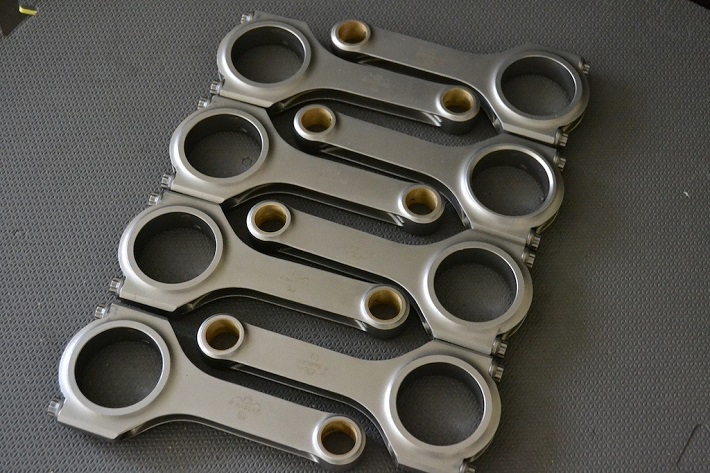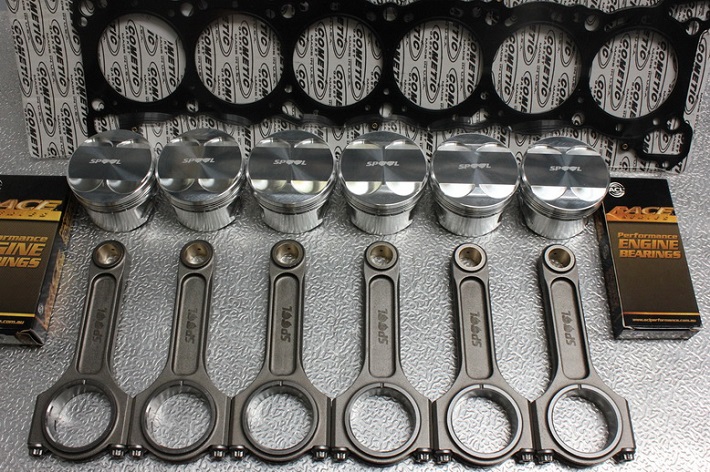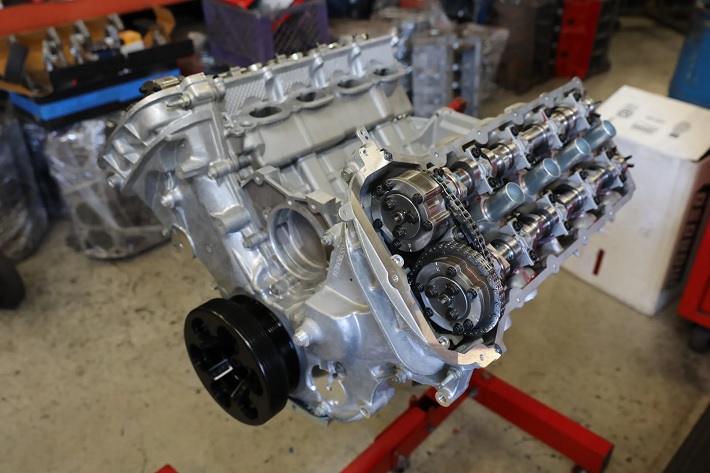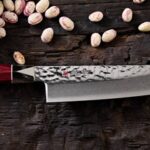Rebuilding a Barra or Commodore and want more power? Or maybe a Skyline or Supra? Chances are you’ll be looking for bottom end parts to wring out the last remaining horses and add a few more. The engine internals are where modifications to stock vehicles start to get serious. You know what you want, and have a general idea of the changes to bring that to life. Swapping pistons, connecting rods, bearings and crankshafts is where it all begins.
The cars mentioned above are obvious contenders for modification. And as such, they’ll be the ones you’ll see more of. Then, there are the unsuspecting sleeper cars that put newer 6-figure racers to shame. Think of Corollas, Camrys and a range of utes and 4WDs that make you stop and think for a while. How much more power can I get from an engine? This all boils down to the parts you choose, and how they are configured to balance everything out. Let’s begin with the missing link in getting that power down – connecting rods.
What is a Connecting Rod?

Connecting rods, or engine conrods, are the parts that connect the pistons to the crankpin journals. They are tasked to convert the linear up and down movement of the pistons in each engine cycle into rotating force that acts on the crankshaft. This process happens hundreds of times a second, and the connecting rods are subjected to immense forces, as pistons push down in the combustion cycles and pull up for the exhaust.
Parts of a Conrod
The top end of the conrod is connected to the piston by way of the piston wrist pin which sits inside the conrod bushing. The assembly is held in place with a piston pin lock. From here you have the conrod shaft or beam, which elongates and retracts with each piston cycle. The big or bottom end consists of a semi-circular part that sits atop the crankpin. The conrod takes form when the bottom or bearing cap is bolted to the bottom end on either side and locked into place with nuts. Inside are the bearings, with drilled oil holes to ensure proper lubrication.
Types of Conrods

Connecting rods differ in their design, build and purpose. In terms of design, engine rods take the shape of either I-beams or H-beams and get their name from the cross-section cut out in the top end (looking through the top of the cylinder bore). I-beams are present in most production cars, as they’re generally lighter and thinner in the shaft and serve well in high revving engines. H-beams have traditionally more heft to them, are wider in the shaft and need more machining, so they tend to be more expensive. They’re good for high compression engines with loads of torque.
Both conrod types can up performance when used in the right engine and for the right purpose. Generally speaking, I-beams are lighter so tend to be found in engines reaching higher redlines, like turbo-charged inline four and six-cylinder engines. H-beams perform better in naturally aspirated big displacement petrol and diesel engines. There are exceptions to every rule though, and you’ll find performance H and I-beams.
More important is the material used and the production process. Here we have steel, aluminium and titanium connecting rods, that are either cast, forged or in billet form. The forces acting on the rods are extremely high, and enough to cause bending or cracking. A cracked conrod will seize the engine, and in the worst-case scenario completely destroy it. Therefore, metals and production processes are carefully selected for the intended purpose.
Cast steel connecting rods are the cheapest to manufacture, and are adequate for most production cars. The middle ground in this respect are the forged aluminium alloy conrods, as forging strengthens the rod in critical areas (the shaft and bottom end). These are worthy replacement rods for performance-oriented street cars as they reduce weight over carbon steel variants and have more flexibility in the exhaust stroke. You’ll find these in higher revving cars. Lastly, there are the most expensive type, billet rods. These need more machining, essentially formed from a single piece of metal. They’re typically used in high performance track cars.
Pairing Conrods with Other Bottom End Parts

To achieve optimal operation, you need to choose conrods in the right materials and design. Remember that they also need to be paired with parts with similar tensile strength to ensure the performance gains are balanced. You’ll find packaged kits with both pistons and connecting rods for various engines and vehicle models.
Parts dealers will help in choosing what you need for your intended purpose. A faster revving engine might be better with lighter forged aluminium I-beams. Or forged carbon steel I-beams when compression Is higher. Alternately, those in the know may recommend H-beams in turbo-charged diesel utes. It all depends on the stock engine block and what you intend to do.
In any case, a performance connecting rod won’t reach its full potential (and justify the buy) when paired with the stock piston. To get more power down on the crankpins, you’ll want pistons that can handle fuel and air intake modifications for better combustion. These will have crowns and skirts better coping with higher temperatures and pressure, as well as reinforced piston pins. Once you’ve replaced pistons and rods, throw in a precision-machined billet crank, just for the fun of it.



